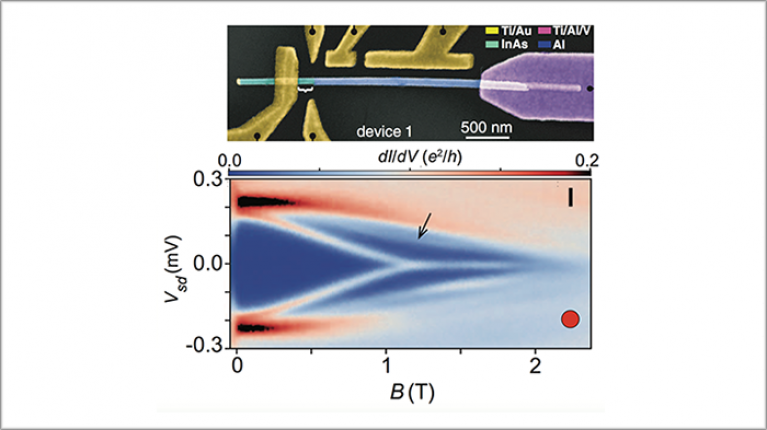
The first signature of Majorana physics, identified experimentally at TU Delft in 2012, focused on a characteristic conductance peak at zero voltage. It bore many signatures of Majorana zero modes, but had a sizable background signal that obscured how the peak arose out of coalescing Andreev bound states. Recently, Mingtang Deng and a Station Q Copenhagen (QDev) team considered a similar geometry—now fabricated with epitaxial semiconductor-superconductor nanowires grown by Peter Krogstrup, also of QDev.
Published in Science (December 2016), this new material system provides a clearer view of how Majorana zero modes emerge, adding support for the Delft interpretation and exploring new, previously unconsidered regimes, including how the Majorana zero mode hybridizes with a quantum dot at the end of the wire. The measurements, led by postdoctoral fellow Mingtang Deng, along with a team of experimentalists and theorists, are complemented by extensive numerical simulations, showing very good agreement between theory and experiment. The case for Majoranas is stronger now, and furthers our understanding of the relationship between Andreev states and Majorana zero modes in proximitized nanowires.
Read the Science article.
